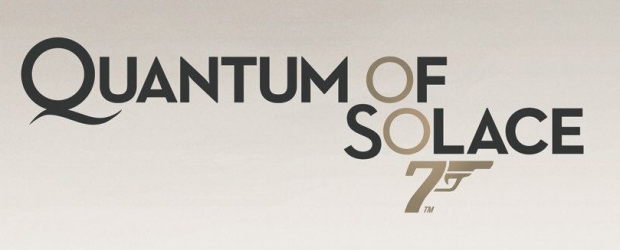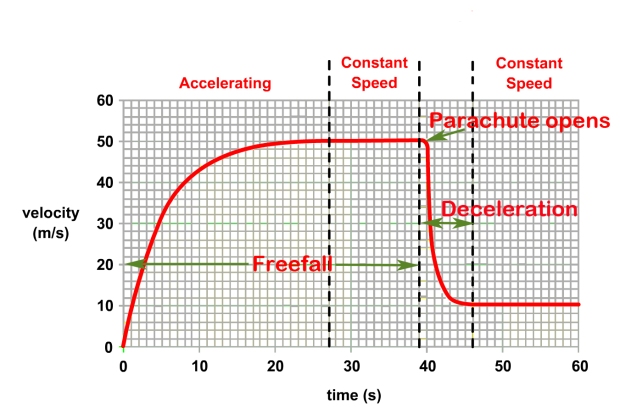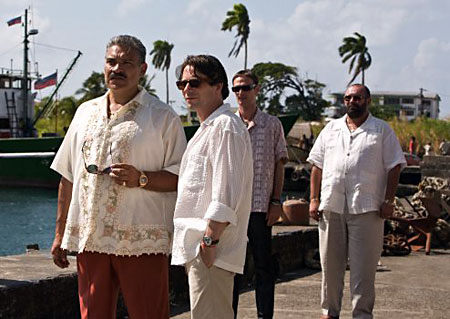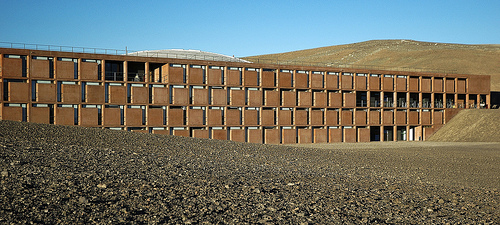Skyfall is so close I can smell it. My parents booked their tickets last week. MY PARENTS. They usually only book for Harry Potter films. But, on our way to Mendes and QILF we still need to negotiate Quantum of Solace and we had better do it quick before I forget it again.
The problem with QoS is that while it is a serviceable Bond film – it does the join the dots globe-trotting reasonably well and it more or less has a plot – it suffers from not being as good as Casino Royale, and from being utterly humourless. It doesn’t have the stupid of an invisible car, Denise Richards as a nukular physicist, outrageous racism, psychics, space battles, stupid Bond-girl names, jet-packs, gadgets, gizmos, death rays, submarines, or sharks with frickin’ laser beams on their heads. Dominic Greene is no Blofeld, He’s not even a Le Chiffre. In short, it’s not bad enough to be memorable.
Luckily, it looks like there’s some suspect science in there…
Splatted
Leaving aside the fact that the pile of junk airplane that Bond has managed to acquire for the plane chase would never be able to out-manouevre the pursuing fighter plane, that’s not how you skydive. Here’s what tv tropes has to say on the matter.
We’ll assume that Bond and Camille are at terminal velocity – so somewhere around 120 miles per hour. The parachute is opened about 2 seconds before they hit the ground. It is very unlikely that opening the parachute at this height would slow down Bond and Camille to the point where they wouldn’t be smashed to pieces. Although the deceleration provided by deploying the parachute should (according to wikipedia) slow descent from 120 miles per hour to 18 miles per hour, this isn’t quite instantaneous – it would take a few seconds to slow them down (as you can see from the graph below).
For things like BASE jumping, modifications have to be made to the equipment; BASE jumping is done from lower, land-based altitudes, and a chute must be deployed much more rapidly because the fall is that much shorter and there is less time to slow down to a survivable falling speed.
As has previously been discussed in Schiensh of Bond there are numerous documented cases of unlucky skidivers whose parachutes fail to open. Although people can survive, they seldom survive completely unscathed.
How to make a desert
Dominic Greene’s plans for world domination of Bolivia involve placing a puppet dictator and controlling the water supply. By building dams and creating sink holes, Greene has successfully taken control of 60% of Bolivia’s water supply.
Bolivia is rich in natural resources, including vast amounts of natural gas, and an abundance of minerals. Although the country is rich in natural resources, environmental degradation is leaving the inhabitants in poverty. These threats include deforestation, water pollution occurring as a result of increased industrial mining and natural disasters. The links between environmental degradation are highlighted in this report.
Throughout much of Bolivia, water sources are plentiful, however, in some areas including the mountainous regions, water is becoming more scarce. The real threats to fresh water are principally pollution; there is industrial waste from mining activities, tanning and leather processing, sugar refineries and there issubstantial pesticide run-off from farming.
Creating a desert from tropical rainforest is major factor in the incidence of environmental disasters. Deforestation, either because of logging, clearing of forest for farmland or extraction of minerals, leads to degradation of the soil. Without the trees, topsoil is eroded and is less able to absorb water. It becomes less fertile, but the area becomes much more prone to flooding. This change in the landscape is known as desertification.
Dominic Greene’s plan to hide all the water is somewhat unambitious – he could more successfully create a desert by pushing industrial development in this developing country. Though, I suppose this would not be entirely in keeping with his environmental image.
Why is there a hotel in the middle of the desert?
I have yet to find a convincing argument as to why there is a hotel in the middle of the Bolivian Atacama desert. It’s clearly deserted. No one uses it. Nor can I understand why, in the world’s driest desert, there are such a large number of flammable fuel cells in and around the mostly wooden hotel. Health and Safety clearly is not a thing in Bolivia.
Why would anyone build a hotel in the middle of a desert? Well, the structure used in Quantum of Solace is the Paranal Residencia, a hotel built for workers of the European Southern Observatory, where there is a telescope in the Chilean Atacama desert called the Very Large Telescope. According to a paper on making the Paranal observatory more green, the complex relies entirely on diesel powered generators. The alternatives they were looking at were solar photovoltaic cells and wind power. Not hydrogen cells.
As for the fuel cells apparently powering the hotel in the film – we don’t get much information about them, we do see a container of hydrogen explode. Hydrogen is very flammable. so if there is shooting and stuff going on, it’s going to catch fire. Especially if your building is primarily made of wood…
Right, Mendes. BRING IT.




